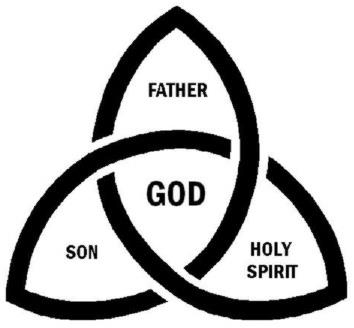
It has long been asserted that arguing in favor of the Trinity from an Islamic perspective presents a unique challenge, as Islam and Christianity have fundamental theological differences, especially concerning the nature of God. Islam is strictly monotheistic, emphasizing the absolute oneness of God (Allah), and it categorically rejects the Christian concept of the Trinity, which it perceives as associating partners with Allah (shirk). However, there may be a plausible argument that can be made in favor of the Trinity from an Islamic perspective that ought to be visited. This essay engages in this discussion with an open-minded approach, aiming to find points of commonality and understanding, rather than being bound to single-dimensional semantics.
The Concept of Tawheed (Oneness of God) in Islam
Islam’s foundation is the belief in Tawheed, the Oneness of God. The Qur’an emphatically denies God’s plurality in essence or personhood (Surah Al-Ikhlas). Therefore, any discussion of the Trinity from an Islamic perspective is deemed to start at a theological impasse. However, exploring the Trinity through Islamic lenses doesn’t necessarily have to be an attempt to reconcile the irreconcilable, rather an attempt can be rendered to understanding the Trinity’s nuanced interpretation which gives way to possible reconciliation with Islamic monotheism.
The Trinity: A Christian Perspective
The Trinity is a central doctrine in Christianity, describing God as one Being in three forms: The Father, the Son (Jesus Christ), and the Holy Spirit. Each Form shares the same essence but distinct in form-hood. This concept, while challenging to comprehend fully, speaks to the complexity and mystery of the Divine nature in Christian theology which will be explained in depth herewith.
To make the case for the compatibility of the Trinity with Islam’s understanding monotheism, a compelling analogy can be drawn from the natural world, specifically the various states of water: liquid, ice, and vapor. Just as water can exist in three distinct forms yet remains fundamentally the same substance, the Trinity can be viewed through a similar lens—three Forms (the Father, the Son, and the Holy Spirit) who are distinct yet one and the same in essence. This comparison helps illustrate how the Trinity does not fracture the unity of God but rather reveals the complexity and multifaceted nature of the divine being.
The analogy of water in its different states simplifies the concept without diminishing the profound mystery of the Trinity. Water, in its liquid form, can be likened to the Father, the source and sustainer of life. Ice, which is solid, might represent the Son, Jesus Christ, who embodies the tangible, incarnate presence of God in the world. Vapor, invisible and allencompassing, could symbolize the Holy Spirit, working unseen and permeating all aspects of existence. Despite the distinct roles and manifestations, it is imperative to understand that they are not separate entities but different expressions of the same divine substance.
This perspective aligns with the doctrine of homoousios, a term championed by the early Church Fathers to articulate that the Father, the Son, and the Holy Spirit share the same essence. Just as it is incorrect to view liquid water, ice, and vapor as three separate kinds of substances—they are all H2O—so too is it mistaken to see the Forms of the Trinity as dividing the divine essence. They are co-equal, co-eternal, and consubstantial, fully participating in the one nature of God.
By contemplating the Trinity as analogous to water’s triune state, we can gain a deeper appreciation for the unity and diversity within the Godhead—a unity that does not negate the individuality of each Form but rather affirms the intricate and relational nature of the divine. This analogy, while not exhaustive in capturing the entirety of the Trinity’s mystery, offers a helpful framework for understanding how God can be three in Form yet one in essence, thereby upholding the principle of monotheism at the heart of Christian faith.
Islamic Acknowledgment of Jesus and the Holy Spirit
Another Islamic perspective can offer acknowledgment of aspects of the Trinity through its recognition of Jesus (Isa in Islam) and the Holy Spirit. In Islam, Jesus is revered as a prophet and the Messiah, born of the Virgin Mary, and endowed with miracles by Allah’s permission. The Holy Spirit (Ruh al-Qudus) is mentioned in the Qur’an as a spirit from Allah, often interpreted as the Angel Gabriel, who supported and strengthened prophets including Jesus.
Points of Reflection on the Essential Commonality
1. Monotheism as a Common Foundation: Both Islam and Christianity emphasize monotheism, though they define it differently. This shared belief in one God can serve as a starting point for deeper understanding the implication of the Trinity.
2. Reverence for Jesus and the Holy Spirit: While Islam and Christianity differ in their understanding of Jesus and the Holy Spirit, the fact that both are recognized in Islam can facilitate a pathway to exploring the nature of the Trinity and its significance in Christian theology.
3. The Mystery of the Divine: Both religions acknowledge the mystery and transcendence of God. Christians might describe the Trinity as a divine mystery beyond full human understanding, while Muslims emphasize God’s incomparability and transcendence (tanzih).
4. Seeking Common Ground: Focusing on values and teachings that Islam and Christianity share such as compassion, mercy, and justice, rather than the entrapment of the semantic debate over the Trinity, can deepen the connectivity between the two traditions.
In conclusion, while the theological premise of the Trinity may not be fully embraced by Islamic theology without compromising the fundamental principle of Tawheed, there exists a possibility for Muslims and Christians to engage in meaningful dialogue over the aforementioned understanding of the Trinity by virtue of reference from the natural world. This dialogue can be rooted in a shared commitment to monotheism, and a willingness to understand the depth and nuances of each other’s faith traditions. Through such discussions, followers of both religions can build bridges of understanding and respect, focusing on what unites them without diminishing the core tenets of their respective beliefs.


